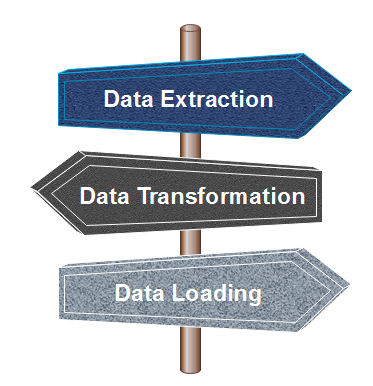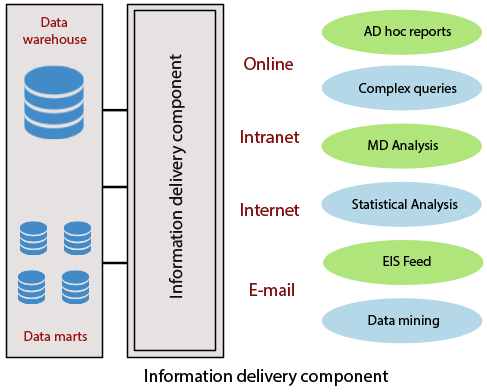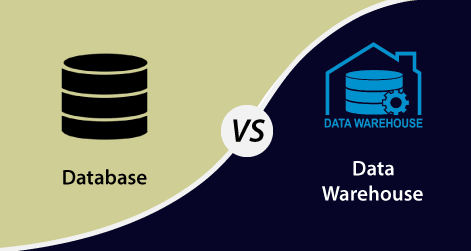Components or Building Blocks of Data Warehouse
Architecture is the proper arrangement of the elements. We build a data warehouse with software and hardware components. To suit the requirements of our organizations, we arrange these building we may want to boost up another part with extra tools and services. All of these depends on our circumstances.

The figure shows the essential elements of a typical warehouse. We see the Source Data component shows on the left. The Data staging element serves as the next building block. In the middle, we see the Data Storage component that handles the data warehouses data. This element not only stores and manages the data; it also keeps track of data using the metadata repository. The Information Delivery component shows on the right consists of all the different ways of making the information from the data warehouses available to the users.
Source Data Component
Source data coming into the data warehouses may be grouped into four broad categories:
Production Data: This type of data comes from the different operating systems of the enterprise. Based on the data requirements in the data warehouse, we choose segments of the data from the various operational modes.
Internal Data: In each organization, the client keeps their “private” spreadsheets, reports, customer profiles, and sometimes even department databases. This is the internal data, part of which could be useful in a data warehouse.
Archived Data: Operational systems are mainly intended to run the current business. In every operational system, we periodically take the old data and store it in achieved files.
External Data: Most executives depend on information from external sources for a large percentage of the information they use. They use statistics associating to their industry produced by the external department.
Data Staging Component
After we have been extracted data from various operational systems and external sources, we have to prepare the files for storing in the data warehouse. The extracted data coming from several different sources need to be changed, converted, and made ready in a format that is relevant to be saved for querying and analysis.
We will now discuss the three primary functions that take place in the staging area.

1) Data Extraction: This method has to deal with numerous data sources. We have to employ the appropriate techniques for each data source.
2) Data Transformation: As we know, data for a data warehouse comes from many different sources. If data extraction for a data warehouse posture big challenges, data transformation present even significant challenges. We perform several individual tasks as part of data transformation.
First, we clean the data extracted from each source. Cleaning may be the correction of misspellings or may deal with providing default values for missing data elements, or elimination of duplicates when we bring in the same data from various source systems.
Standardization of data components forms a large part of data transformation. Data transformation contains many forms of combining pieces of data from different sources. We combine data from single source record or related data parts from many source records.
On the other hand, data transformation also contains purging source data that is not useful and separating outsource records into new combinations. Sorting and merging of data take place on a large scale in the data staging area. When the data transformation function ends, we have a collection of integrated data that is cleaned, standardized, and summarized.
3) Data Loading: Two distinct categories of tasks form data loading functions. When we complete the structure and construction of the data warehouse and go live for the first time, we do the initial loading of the information into the data warehouse storage. The initial load moves high volumes of data using up a substantial amount of time.
Data Storage Components
Data storage for the data warehousing is a split repository. The data repositories for the operational systems generally include only the current data. Also, these data repositories include the data structured in highly normalized for fast and efficient processing.
Information Delivery Component
The information delivery element is used to enable the process of subscribing for data warehouse files and having it transferred to one or more destinations according to some customer-specified scheduling algorithm.

Metadata Component
Metadata in a data warehouse is equal to the data dictionary or the data catalog in a database management system. In the data dictionary, we keep the data about the logical data structures, the data about the records and addresses, the information about the indexes, and so on.
Data Marts
It includes a subset of corporate-wide data that is of value to a specific group of users. The scope is confined to particular selected subjects. Data in a data warehouse should be a fairly current, but not mainly up to the minute, although development in the data warehouse industry has made standard and incremental data dumps more achievable. Data marts are lower than data warehouses and usually contain organization. The current trends in data warehousing are to developed a data warehouse with several smaller related data marts for particular kinds of queries and reports.
Management and Control Component
The management and control elements coordinate the services and functions within the data warehouse. These components control the data transformation and the data transfer into the data warehouse storage. On the other hand, it moderates the data delivery to the clients. Its work with the database management systems and authorizes data to be correctly saved in the repositories. It monitors the movement of information into the staging method and from there into the data warehouses storage itself.
Why we need a separate Data Warehouse?
Data Warehouse queries are complex because they involve the computation of large groups of data at summarized levels.
It may require the use of distinctive data organization, access, and implementation method based on multidimensional views.
Performing OLAP queries in operational database degrade the performance of functional tasks.
Data Warehouse is used for analysis and decision making in which extensive database is required, including historical data, which operational database does not typically maintain.
The separation of an operational database from data warehouses is based on the different structures and uses of data in these systems.
Because the two systems provide different functionalities and require different kinds of data, it is necessary to maintain separate databases.
Difference between Database and Data Warehouse

| Database | Data Warehouse |
|---|---|
| 1. It is used for Online Transactional Processing (OLTP) but can be used for other objectives such as Data Warehousing. This records the data from the clients for history. | 1. It is used for Online Analytical Processing (OLAP). This reads the historical information for the customers for business decisions. |
| 2. The tables and joins are complicated since they are normalized for RDBMS. This is done to reduce redundant files and to save storage space. | 2. The tables and joins are accessible since they are de-normalized. This is done to minimize the response time for analytical queries. |
| 3. Data is dynamic | 3. Data is largely static |
| 4. Entity: Relational modeling procedures are used for RDBMS database design. | 4. Data: Modeling approach are used for the Data Warehouse design. |
| 5. Optimized for write operations. | 5. Optimized for read operations. |
| 6. Performance is low for analysis queries. | 6. High performance for analytical queries. |
| 7. The database is the place where the data is taken as a base and managed to get available fast and efficient access. | 7. Data Warehouse is the place where the application data is handled for analysis and reporting objectives. |
